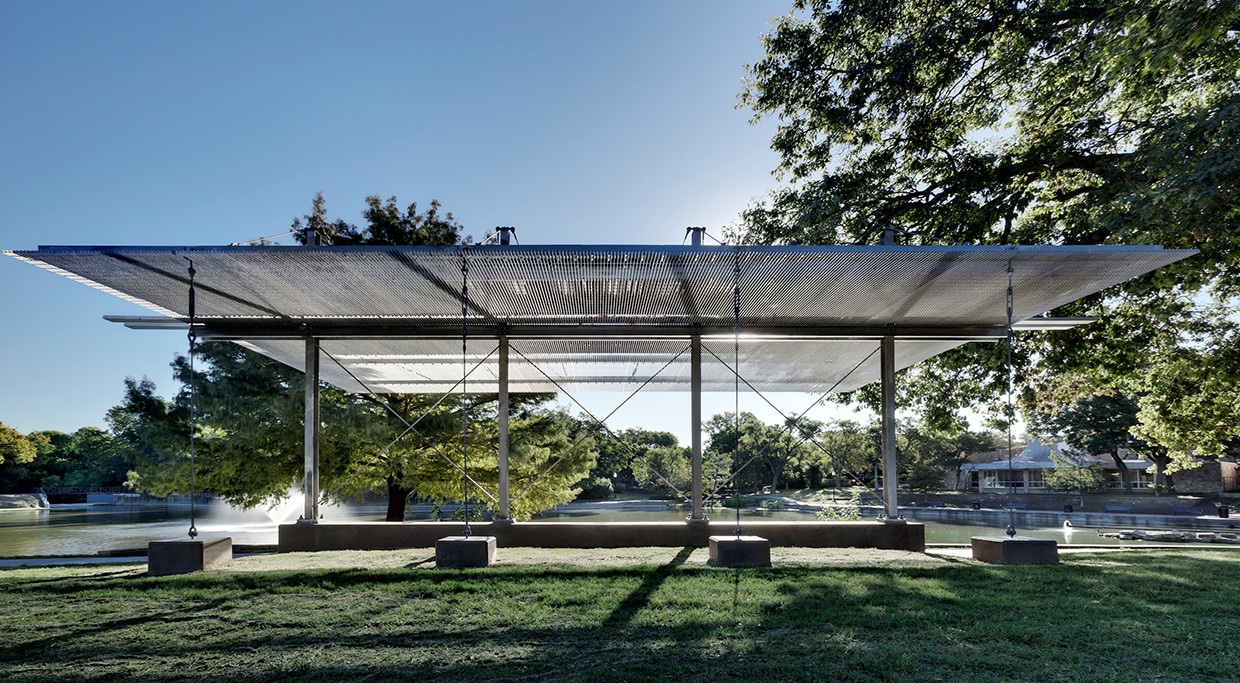“IT IS SAID THE FOREST HAS A CERTAIN LIMIT IF YOU LOOK STRAIGHT AHEAD, BUT THE SIDES ARE BOUNDLESS.”
FROM THE FOREST by RICCARDO BOZZI
Dallas is getting smaller; or rather there is more within Dallas than there was. 43,000 new apartment units are being built as of today. Uber is building a major campus in Deep Ellum. The Nazerian’s extension of Bishop Arts is already showing life and promises to be the engaging pedestrian conduit between Davis and Jefferson that many had hoped for. We have such an embarrassment of great restaurants and variety of foods available to us now that Bon Appetit has just named Dallas 2019’s Best Restaurant City of the Year. There’s big doings in this town and city that for a long time felt like a lot of negative space with a few hotspots. This is a restructuring of our city, both physically and in the minds of its citizens and people around the country. Every moment and move is an important one in terms of , but the one we’re in right now is promising not just a new city with lots of things happening within it, but possibly a new way of life.
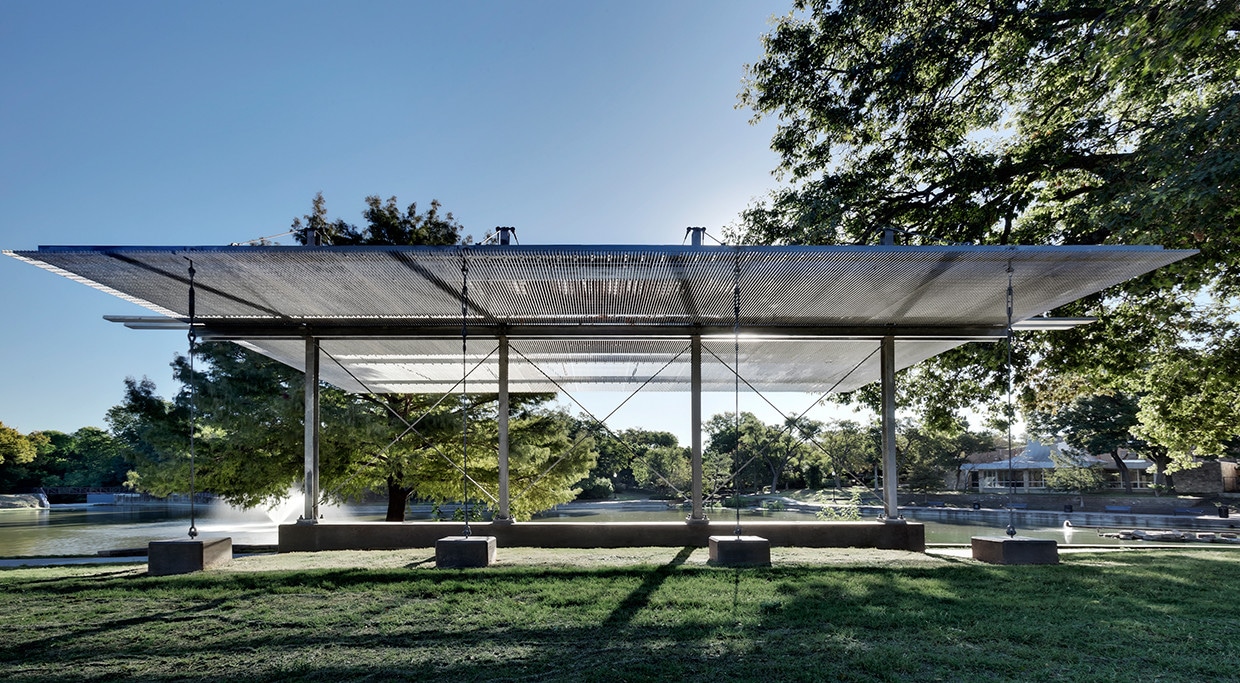
Hausmannization, the vast restructuring of the center of Paris undertaken by Georges-Eugene Hausmann, Napoleon III’s Prefect of Seine, in the late 19th century gave Paris its vast and grand boulevards radiating out from the Arc de Triomphe. The effect of this is perhaps best appreciated in Gustave Caillebotte’s painting “Paris Street, Rainy Day 1877”. The expanse of cobblestones and the deep angles of Paris’ newly formed pathways express the new experience of openness that the city now offered, but at the same time also gives a feeling of emptiness. The space is so vast and the couple in the foreground, indeed each person within the painting, feel disconnected from each other. Many artists of the period lamented the loss of the more cramped and haphazard medieval pathways that had formed over generations in the city. They saw the city as losing the magic of chance and surprise with the impersonal directness of Hausmann’s boulevards.
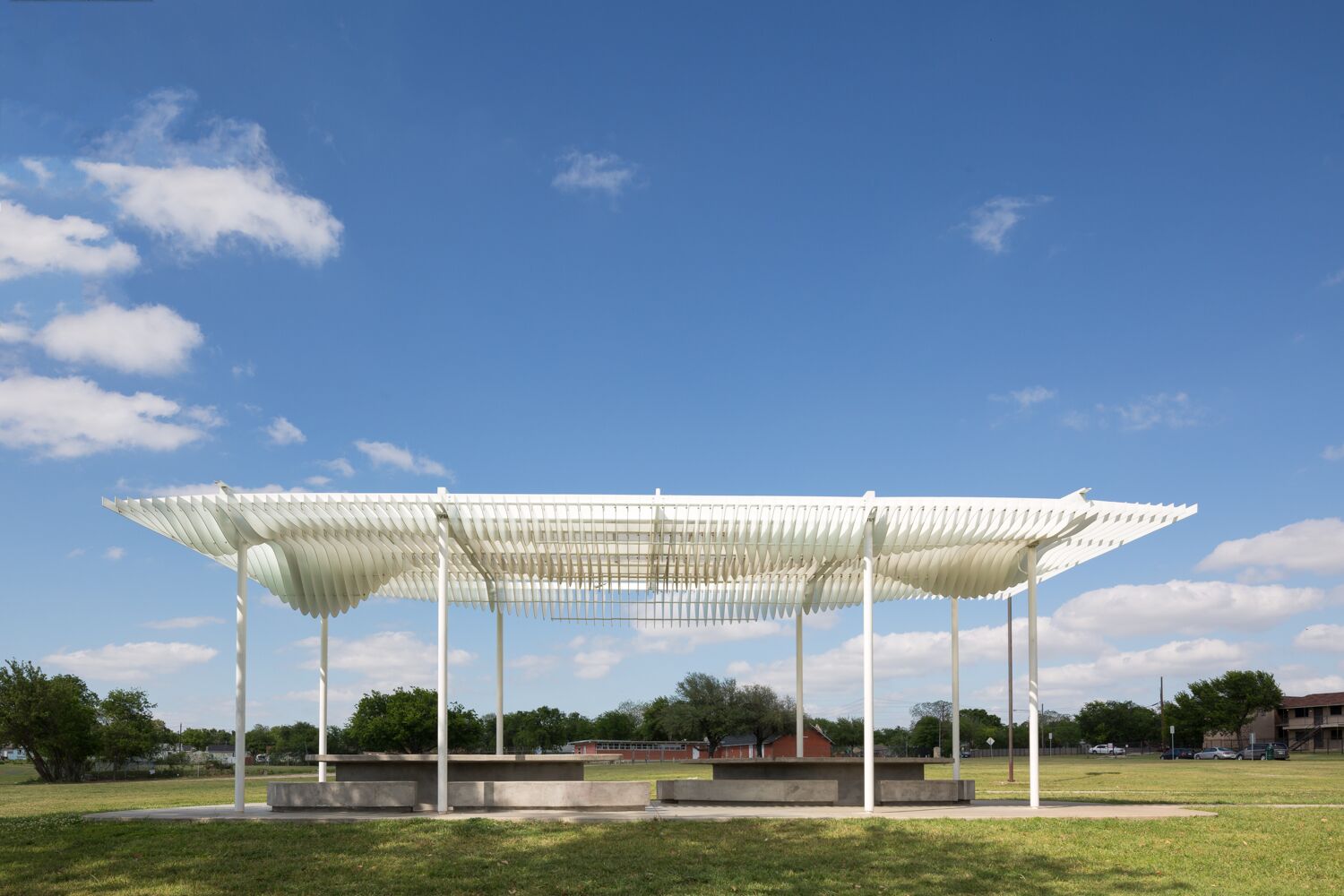
The modern city is grappling with decades of emphasis on infrastructure devoted to being traversed by cars and trucks. Streets provide as efficient a means as you can hope for to maneuver over a great distance, but if you’re traveling by car it’s very much a point A to point B approach. Dallas had for some time been a city of destinations, not neighborhoods-one restaurant or maybe one block was the place to be. Perhaps an area built up around it, but maybe people found another place in another part of town and the other part was forgotten. The pendulum has swung on many parts of Dallas, but frequently it swung faster than an area could develop because there just wasn’t enough there to maintain the momentum. Downtown in particular has had a number of attempts at revitalization. Paradoxically the difference between time and distance experienced or understood within a car versus as a pedestrian, bus or bike-rider has made the moment that we are now experiencing possible. Mixed use developments, however synthetic and precious a cityscape they may be, gave Dallas a taste of many places people wanted to be within walking distance, and with places to live above them. These continue to be models of what people want around the city and the metroplex, and now we’ve come to the moment where more has been done to build on all of this because the model of urban living has proven itself. We’re very much in the moment of synergy where things come together- the opportunity is not just there, but people are ready for it and want it.
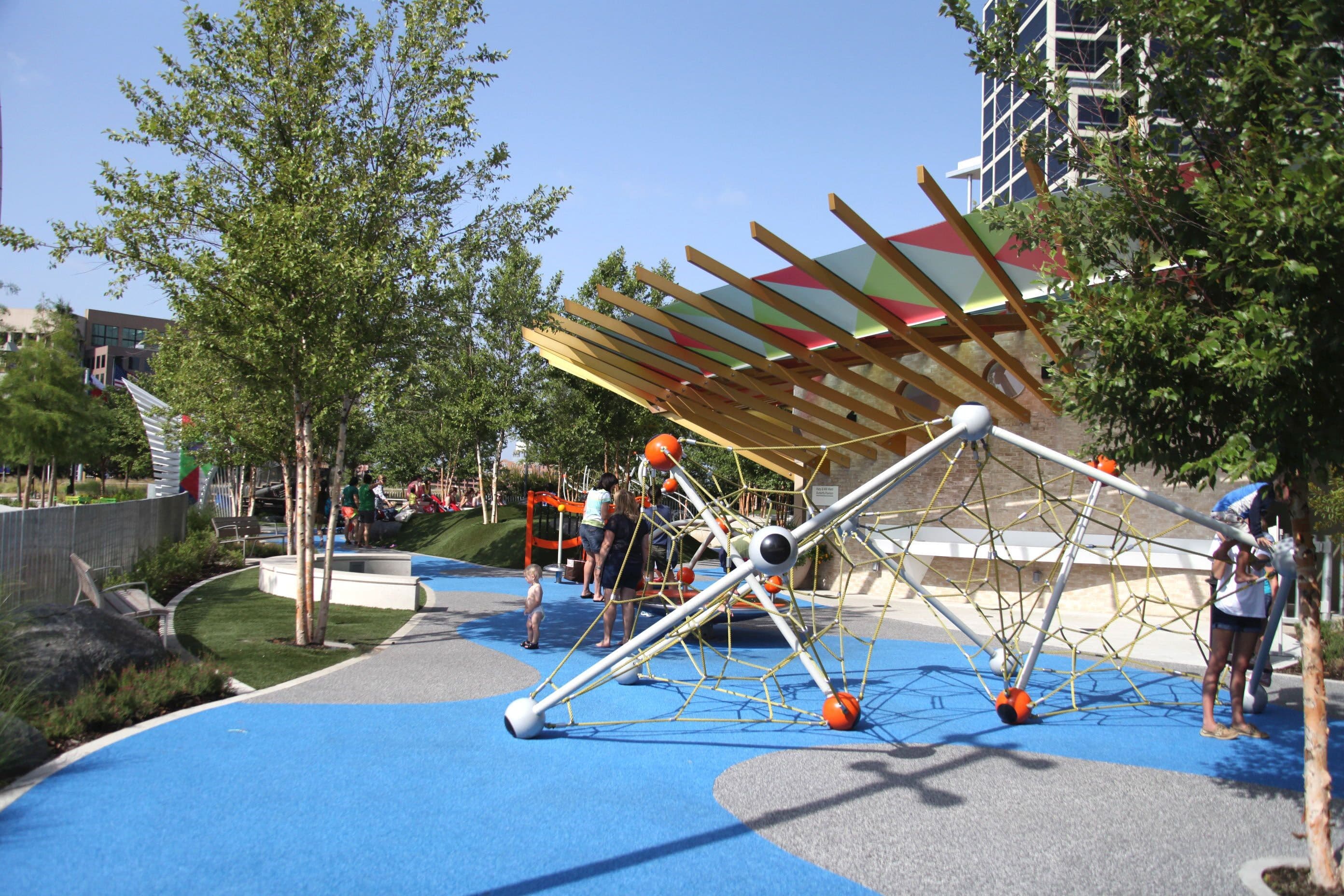
A city, however, is not merely retail or restaurants, a city is a place; the one celebrated by Charles Baudelaire through the character of the “flaneur” in the midst of Hausmannization- “To be away from home, and yet to feel oneself everywhere at home.” It’s a landscape, whether it’s concrete or grass, and where there is grass there should be welcoming spaces and shelters to engage with. This is exemplified in the park pavilion program initiated by Willis Winters. We wrote some years ago about the program that was begun in 2002, which included a provision for 23 new or replacement pavilions- the design of which would be given to architects of note with a directive to have it be of a piece with the surrounding community. There were too many to list then, and the years since that article have delivered several more remarkable and unique structures. Of particular note are the pavilions from Mark Wellen of Rhotenberry Wellen in Kidd Springs Park and Murray Legge Architecture’s in Westmoreland Park. Wellen’s pavilion in Oak Cliff’s Kidd Springs is a study in angular grace, recalling the T-beam pavilions that had dominated Dallas’ park space as an economical bit of sun protection, but Wellen’s is much lighter and inviting in feel- still letting the sun and air pass through and mingle in the sheltered space it creates. Murray Legge’s pavilion, also in Oak Cliff, has a similar levelor construction, but with undulating curves along its bottom like the sweeping underside of a vast cumulonimbus cloud. It’s a playful but sophisticated shape. Both of these provide desperately needed shade, but both also employ light once the sun goes down to fully round out the invitation to anyone to come and enjoy the space they create.
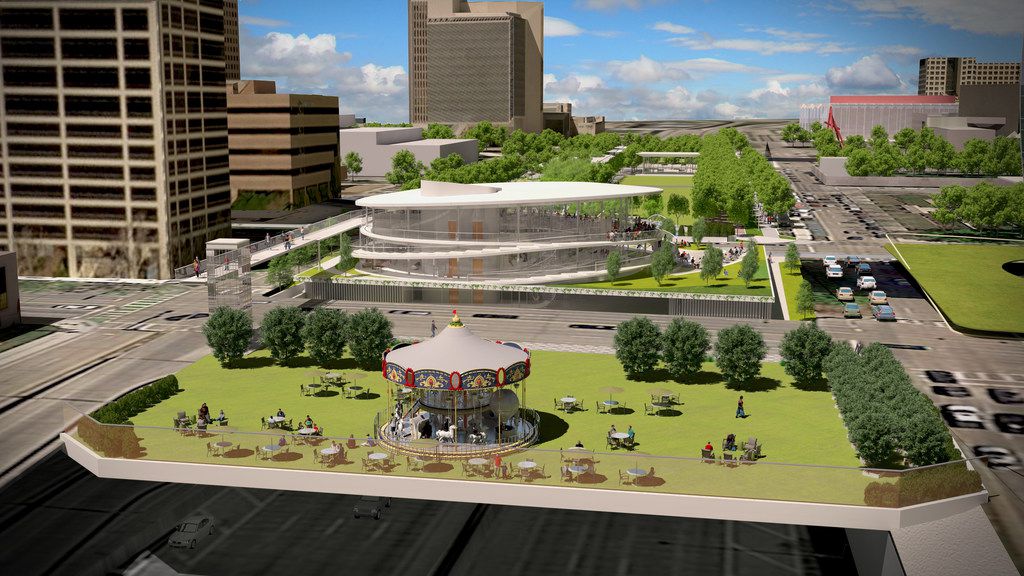
The pavilions highlight Dallas’ greatest challenge in knitting together the fabric of itself; the sun and the heat we experience here are a reality that many other cities can take for granted. Biking or walking is out of the question for many during the heat of summer, but with a mix of transportation options this becomes less of an issue. These options are available right now, perhaps you’ve seen the bike racks on the fronts of DART buses and in the light rail cars, but investing on that expansion will require more than what is currently available has to offer. It’s one of the reasons that the plan for shifting the D2 DART rail lines at Elm, San Jacinto and Main was such a victory. Not only do they offer a means of car-free travel away from the heat of the sun, but they take advantage of a network of travel that doesn’t impede the street-level traffic overhead. It can double the capacity of transport and sidestep sun exposure.
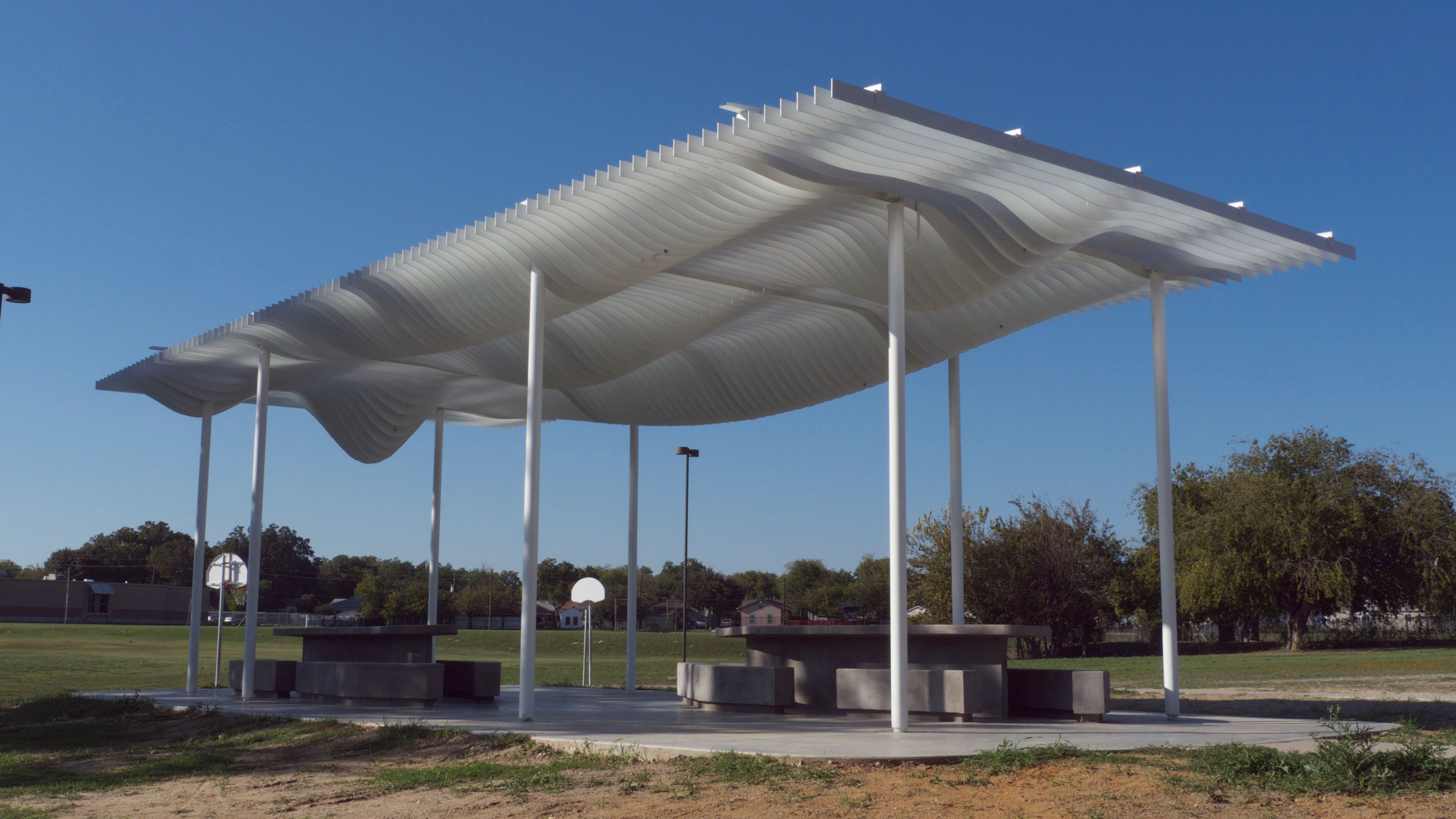
However, another synthetic urban destination has shown that Dallas is not afraid of the sun. Klyde Warren Park has been a remarkable success in reclaiming urban space, but especially in both giving all the citizens of Dallas a great open space for everyone to come together and be outdoors. This, like the mixed-use developments, has spurred Dallas to invest in the conversion of the Continental Avenue bridge, now the Ronald Kirk pedestrian bridge, and another deck park that will cover part of I-35E from 8th Street to the Dallas Zoo. The Southern Gateway Deck Park at 5.8 acres, will be just a little larger than Klyde Warren’s 5 acres, and much of what it will offer will be familiar to everyone that has enjoyed Klyde Warren’s open greenspace, fountain, and play areas for children. It has also brought Dallas to a reckoning with one of our most under-utilized public spaces. In October of 2018 the city of Dallas officially handed management of Fair Park and its facilities over to the non-profit entity Fair Park First, and engaged Spectra, a company that manages both parks and venues around the world, for a twenty year period. Little is known at this point what changes will be made in terms of what will be open and when, for both the facilities and the space itself, but this is the biggest advance in Fair Park being a real part of Dallas since the DART rail began running out to it, and that investment will certainly be a big part in how Dallas will engage with its newly reclaimed park.
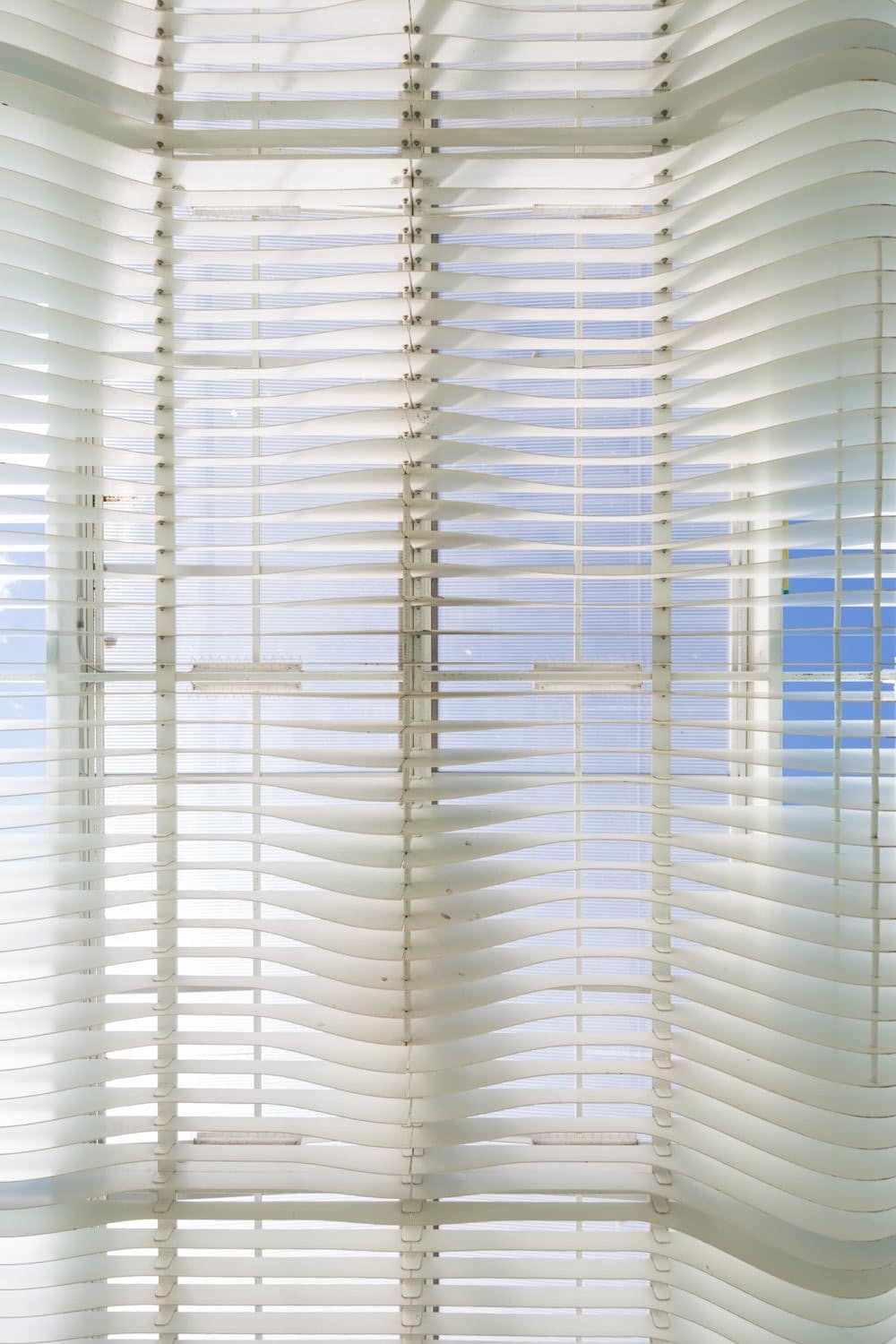
We have a reverse Hausmannization problem: we have to figure out how to fill in the space between the places we are and the places we’d like to be. The city has doubled down even further on its commitment to how it will invest in transport in the city with the Connect Dallas survey, which represents a real chance to determine the North star of this city, and chances are that your voice can matter far more than you realize. This last mayoral election there was less than ten percent voter turnout on both election day and for the runoff election, both held on Saturdays. Very few of Dallas’ citizens voiced their opinion on the future of the city and the impact it could have or will have on them. Even though this survey can easily be completed anywhere a smartphone can function it’s likely not nearly as many people will participate as they could.
You’ve probably got an opinion about traffic, road quality, and travel options in Dallas, and it will be all the louder because you actually voiced it. I had contacted an architect about a pavilion and asked When I responded back to clarify I remarked that it’s amazing how you look at something, and despite it being what it is it registers as something that is familiar to you. Seeing what is right in front of you is much less straightforward than we’d like to believe, because often we’re really seeing something in our mind’s eye, our fixed notion rather than the reality of it, which makes seeing the possibility of something that much more difficult because typically it remains what it’s always been to us.

